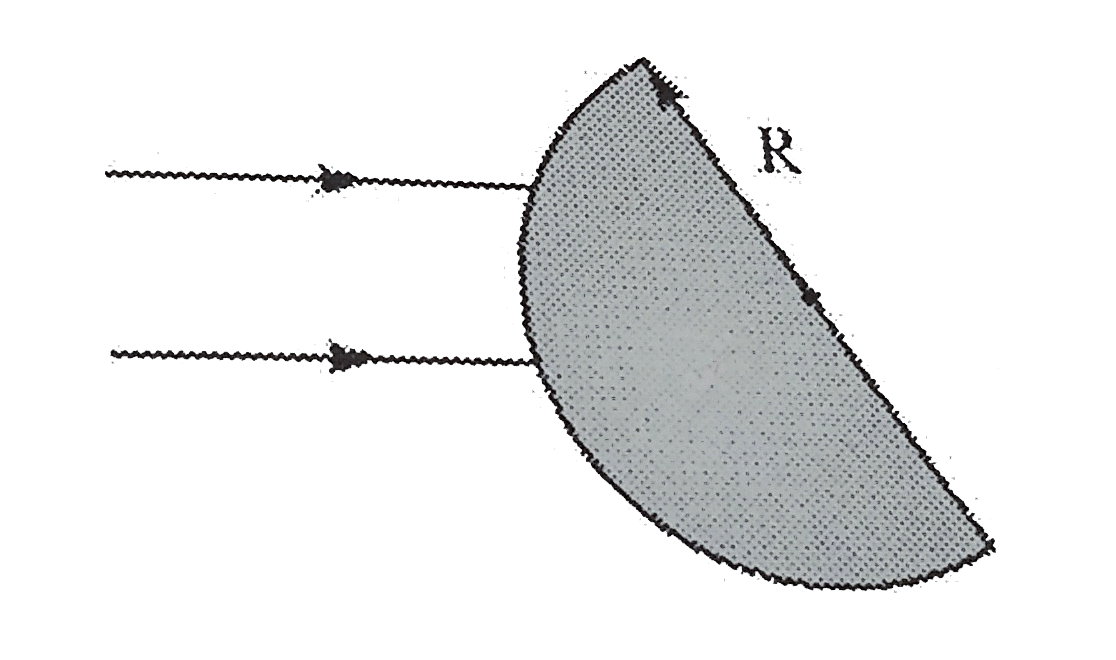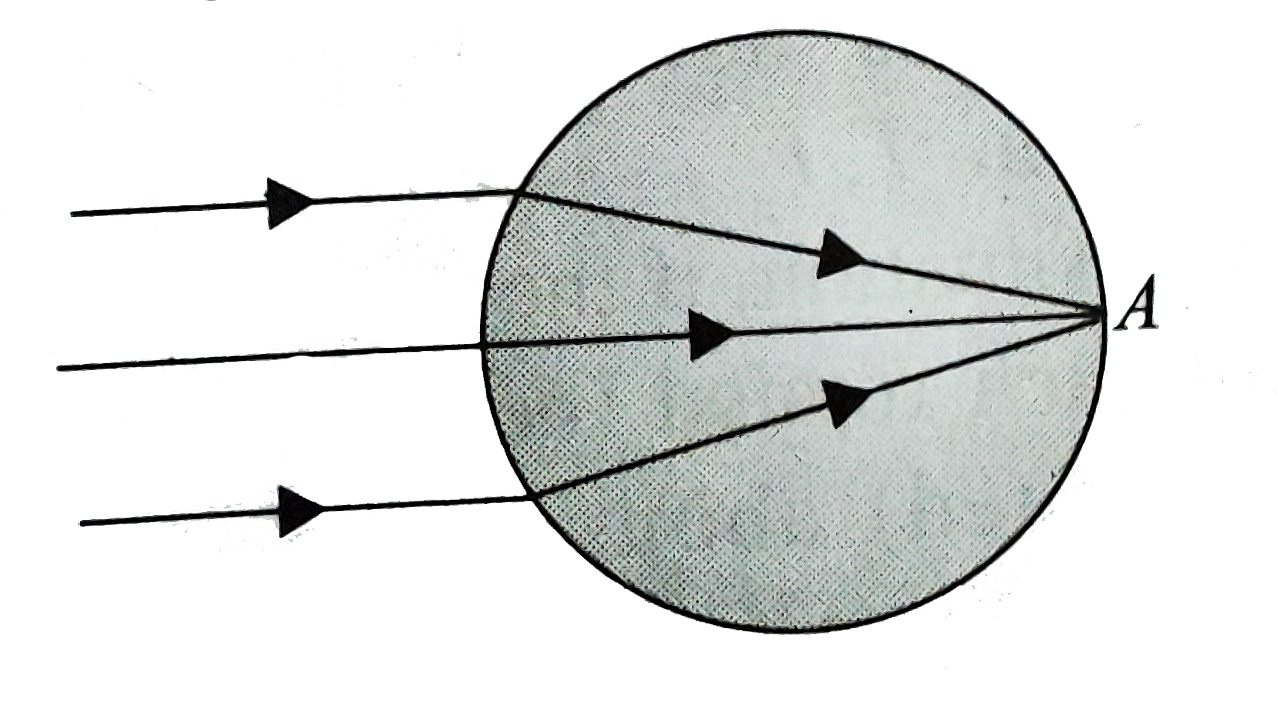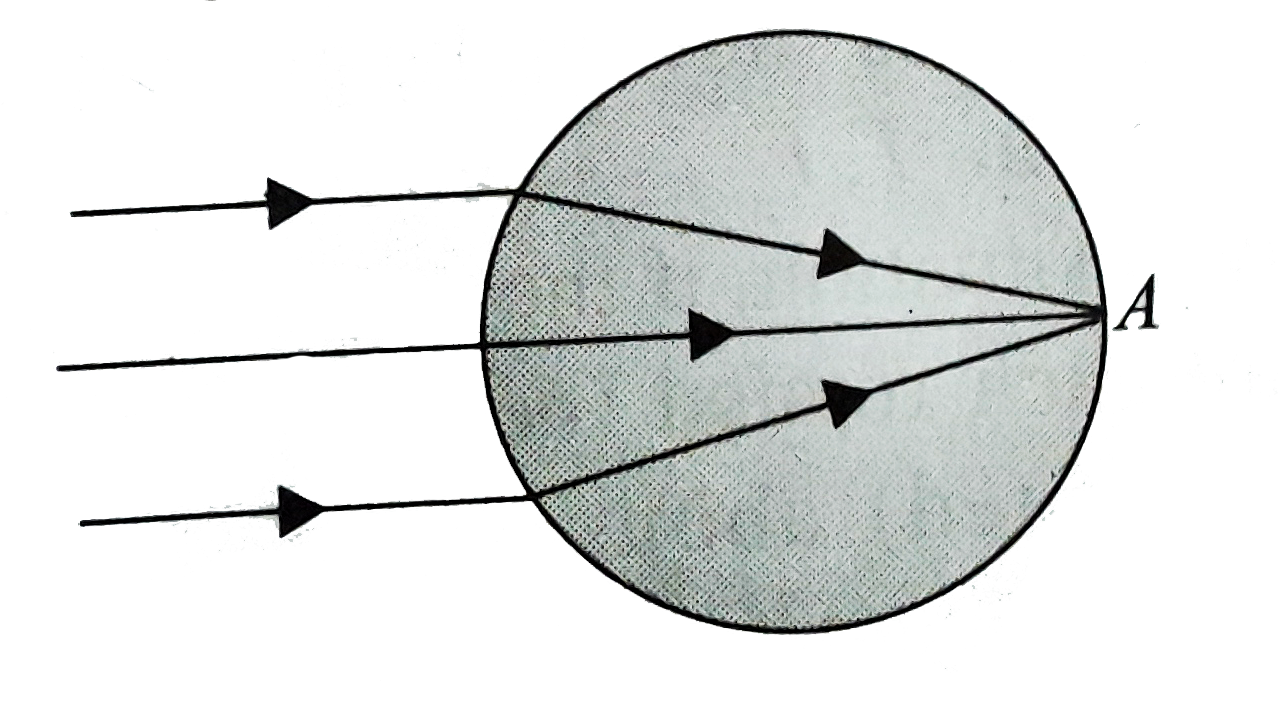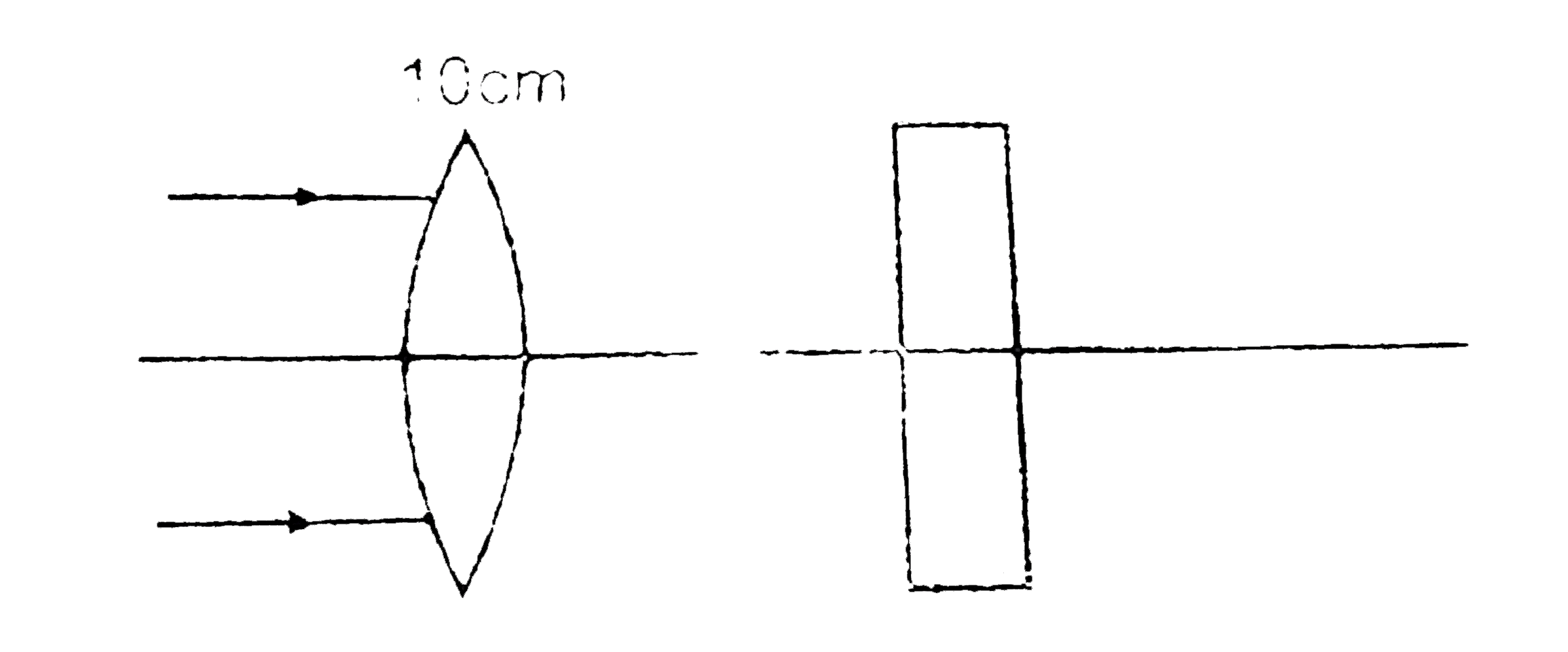A parallel beam of light falls from vacuum on a surface enclosing a medium with refractive3 index n (Fig.) Find the shape of that surface, x(r) if the beam is brought into focus at the point F at a distance f from the crest O. What is the maximum radius of a beam that can still be focussed ?

All rays focusing at a point must have traversed the same optical path. Thus

x+n√r2+(f−x)2=nf or (nf−x)2=n2r2+n2(f−x)2
or, n2r2=(nf−x)2−[n(f−x)]2=(nf−x+nf−nx)(nf−x−nf+nx)
=x(n−1)(2nf−(n+1)x)
=2n(n−1)fx−(n+1)(n−1)x2
Thus, (n+1)(n−1)x2−2n(n−1)fx+n2r2=0
so, x=n(n−1)f±√n2(n−1)2f2−n2(n+1)(n−1)(n+1)(n−1)
=nfn+11+=√1−n+1n−1r2f2
Ray must move forward so x<f, for + sing x>f fro small r, so -sign
(Also x→0 as r→0)
(x>f means ray turning back in the direction of incidence. (see Fig.)
Hence x=nfn+1[1−√1−n+1n−1r2f2]
For the maximum value of r,
√1−n+1n−1r2f2=0 (A)
beacuse the expression under the radical sign must be non-negative, which gives the maximum value of r.
Hence from Eqn .(A), rmax=f√(n−1)/(n+1)
Topper's Solved these Questions
- OPTICSBOOK - IE IRODOV, LA SENA & SS KROTOVCHAPTER - OPTICSEXERCISE - Interference Of Light
33 Videos
- OPTICSBOOK - IE IRODOV, LA SENA & SS KROTOVCHAPTER - OPTICSEXERCISE - Diffraction Of Light
60 Videos
- MECHANICSBOOK - IE IRODOV, LA SENA & SS KROTOVCHAPTER - MECHANICSEXERCISE - Mechanics Problems
92 Videos
- OSCILLATIONS AND WAVESBOOK - IE IRODOV, LA SENA & SS KROTOVCHAPTER - OSCILLATIONS AND WAVESEXERCISE - Electromagnetic Waves, Radiation
36 Videos
Similar Questions
A narrow parallel beam of light falls on a glass sphere of radius R and refractive index μ at normal incidence. The distance of the image from the outer edge is given by-
View SolutionA parallel beam of light is incident on the surface of a transparent hemisphere of radius R and refractive index 2.0 as shown in figure. The position of the image formed by refraction at the first surface is :

View Solution
Knowledge Check
A parallel beam of light falls on a solid tranparent sphere.

Q. For what value of refractive index μ, the thin beam can be focussed at centre of sphere.A1.5B2C2.5Dnone of theseA parallel beam of light falls on a solid tranparent sphere.

Q. If however thin beam is focussed at A, then find the refractive index of the sphere,A1.5B1.7C2.0D2.5A beam of monochromatic light is refacted from vacuum into a medium of refracticve index 1.5 The wavelength of refracted light will be
Adependent on intensity of refracted lightBsameCsmallerDlarge
A parallel beam of light is incident on a lens of focal length 10 cm. A parallel slab of refractive index 1.5 and thickness 3 cm is placed on the other side of the lens. Find the distance of the final image from the lens.
 .
.
View SolutionA narrow parallel beam of light is incident on a transparent sphere of refractives indexnif the beam finally gets focussed at a point situated at a distance=2×(radius of sphere) form the center of the sphere then findn?
View SolutionA parallel beam of light emerges from the opposite surface of the sphere when a point source of light lies at the surface of the sphere. The refractive index of the sphere is
View SolutionA parallel beam of light emerges from the opposite surface of the sphere when a point source of light lies at the surface of the sphere. The refractive index of the sphere is
View SolutionA parallel beam of light is incident normally on the flat surface of a hemisphere of radius 6cm and refractive index 1.5, placed in air as shown in figure (i). Assume paraxial ray approxiamtion.
 .
.
View Solution
